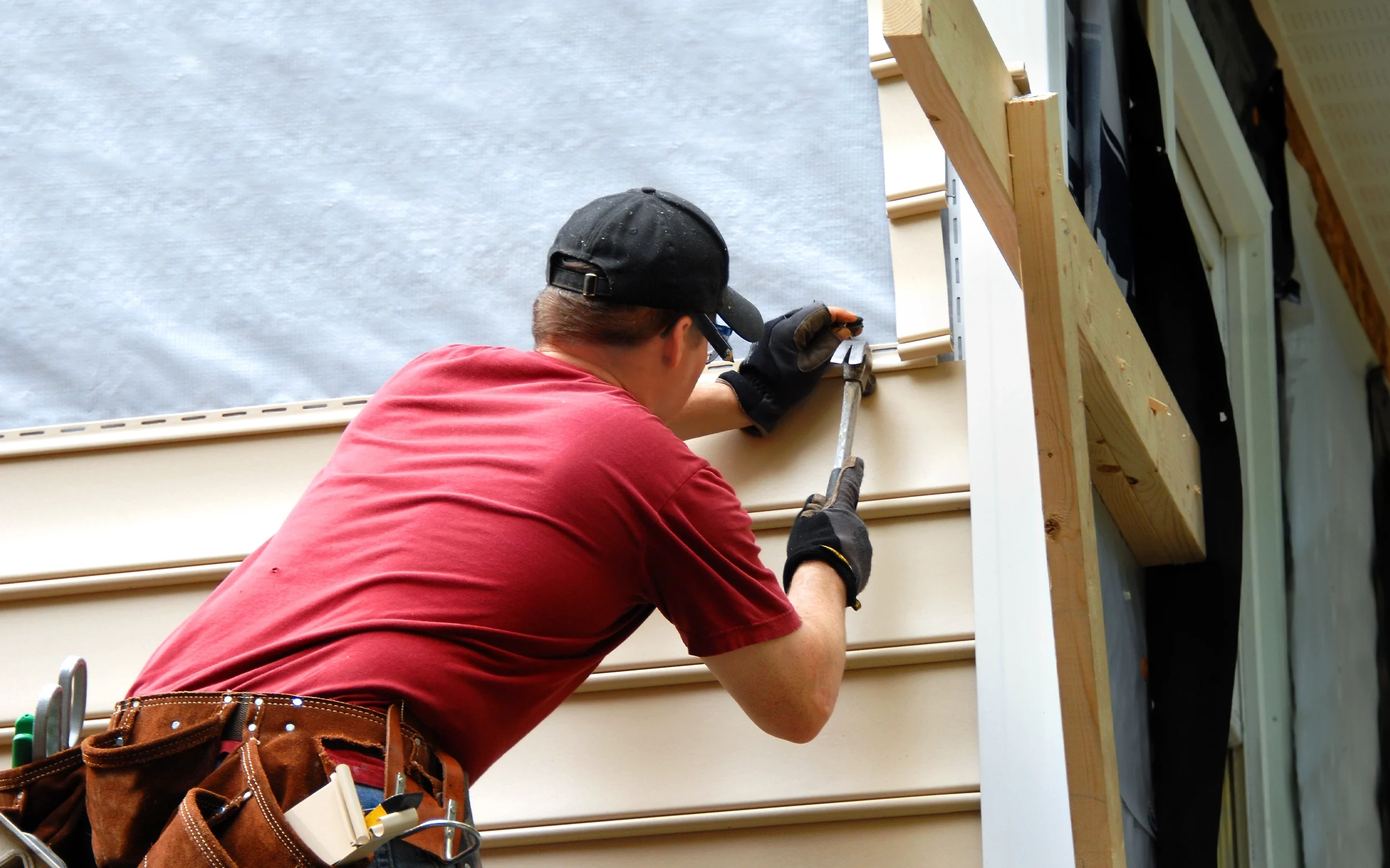Is it time to replace siding at your home or office? In the process of home maintenance, outside siding performs a subtle but critical function in protecting against outside weather changes. However, with time, this outer material may experience wear and tear, requiring a homeowner’s care.
Understanding the subtle signals that indicate the need to replace siding and the outer material is critical to determining the durability of your home’s exterior.
The subtle whispers of peeling paint, as well as the visible look of warped or cracked panels, all tell a tale about the quality of your siding. In this post, we will provide a list of obvious symptoms that your siding needs a refreshment.
Visible Impact
When apparent damage emerges on the exterior panels of your home, it signals a timely reminder to consider replacement. Beyond appearances, it can affect the insulation properties of your home, resulting in higher utility costs and susceptibility to moisture intrusion.

Siding Repair in Northern New Jersey
Ignoring these warning signals might lead to serious structural difficulties, forcing costly repairs in the future. By swiftly repairing this outer material, you not only restore your home’s exterior appeal but also maintain its integrity and value, ensuring durability, protection, and peace of mind for the future.
Outdated Experience
While an antique look may not scream for immediate replacement, it might be a subtle indication that your siding is reaching the end of its life. Faded colors, flaking paint, and warped panels not only distract from your home’s exterior appearance, but they also signify future problems. Sun exposure, moisture infiltration and natural degradation can affect siding materials over time, compromising their protective abilities. Consider an outdated look as a wake-up call to inspect for cracks, gaps, or signs of rot, which could be silently inviting water damage and structural problems.
Visible Mold and Mildew
Mold presence suggests moisture is accumulating beneath the surface, creating a damp haven for these unwelcome guests. This moisture can be due to several culprits – leaky gutters, improper drainage, or damaged siding itself. Left unchecked, it can lead to a sinister domino effect: rotting wood compromised structural integrity and even health risks from airborne spores. While cleaning the mold might provide temporary relief, replacing the affected siding becomes crucial to address the root cause, ensuring your home’s long-term health and your family’s well-being. Remember, ignoring the mold is like putting a Band-Aid on a gushing wound – the real fix lies in tackling the source of the problem.
Loose or Missing Shingles
These small yet crucial components act as guardians, shielding your home from the elements. When they begin to shift or vanish, they expose vulnerabilities in the siding, inviting moisture, pests, and structural damage to infiltrate. Their absence is raises visible concerns, urging homeowners to inspect and fortify their siding promptly. Ignoring these subtle cues risks worsening the problem, potentially leading to costly repairs or compromised structural integrity. Thus, addressing loose or absent shingles promptly can safeguard your home’s resilience and longevity.
Hail or Storm Damage
While hail might look like harmless pebbles from the ground, it can damage your siding material upon impact. Dents become eyesores and missing chunks expose your home to vulnerabilities from natural elements. This is not just an aesthetic issue because compromised siding opens up pathways for water to seep in, breeding mold and rot. Think of it as a silent storm brewing inside your walls, waiting to erupt into costly repairs. Consider replacing your siding as it is an investment in the structural integrity and long-term health of your home.
Increased Energy Bills
Unexplained spikes in your energy bills could be whispering a secret that the siding needs a replacement. Traditional materials like wood, vinyl, or aluminum can degrade over time, developing cracks, warps, or losing their insulating properties. This compromised barrier allows unwanted heat and air to seep in and out, forcing your HVAC system to put an extra effort to keep the temperature comfortable. Your home can benefit from a thermal blanket effect when you replace your siding with contemporary, energy-efficient materials like fiber cement or insulated vinyl, which may lower your energy expenses. So, if you are noticing higher energy bills, consider a siding upgrade as an investment in both your wallet and year-round comfort.
It is possible to extend the lifespan of your home’s siding by addressing issues such as visible eyesores, fading, flaking paint, increased energy bills, mold growth, loose panels, storm damage, and an outdated appearance. Consult a knowledgeable contractor to assess the condition of your siding and study replacement options that are most suited to your demands and budget. Is it time to replace siding at your residence?
